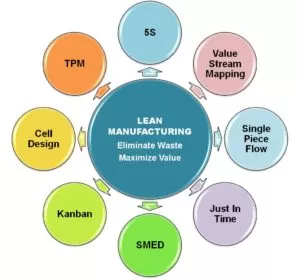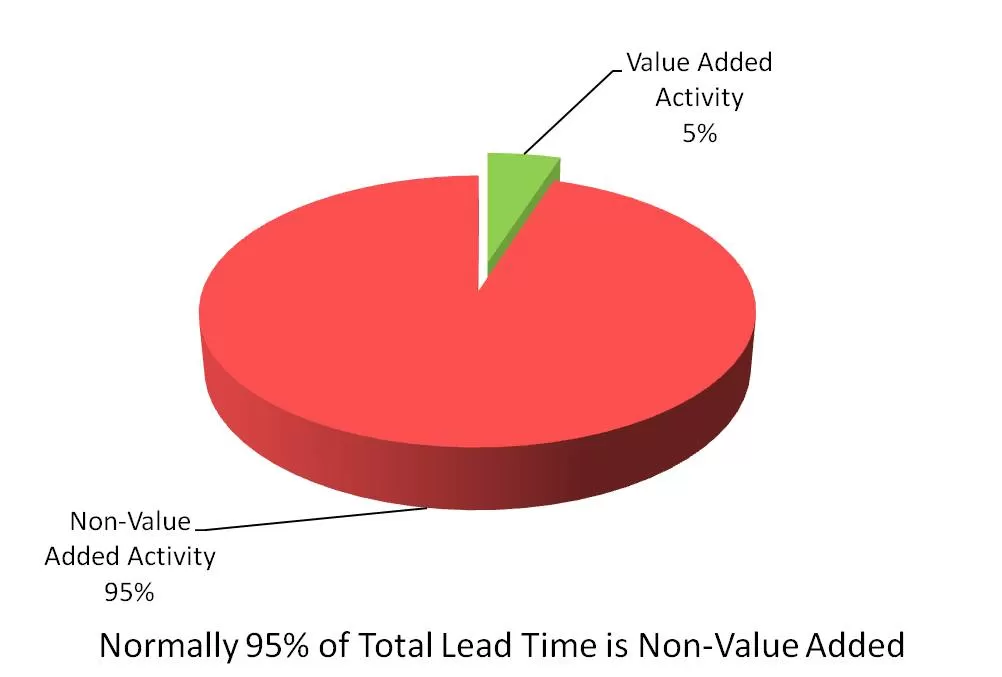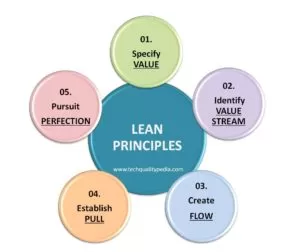Lean Manufacturing is a standardized approach for the identification and elimination of waste (non-value-added process/activities) for achieving perfection.
A systematic approach for maximization of value and elimination of waste.
“A systematic/standardized approach that reduces the time-frame between the customer’s order and delivery of product through waste elimination.

Table of Contents
Lean Meaning
Lean means elimination or minimizing of any kind of waste/non-value-added activity within the manufacturing process. (e.g. 3M waste – Muda, Mura, and Muri, etc.)
Removal of unwanted activity/process that has no value from the customer’s perspective.
Lean is a value-added process for which customer is willing to pay.
There are various Lean Manufacturing Tools or ways to be Lean:
- Lean 5S
- 7 waste of Lean Manufacturing
- Value Stream Mapping-VSM
- KAIZEN
- POKA-YOKE
- Total Quality Management-TQM
- Total Preventive Maintenance-TPM
- Six Sigma-DMAIC
- Single Minute Exchange of Die-SMED
- Just In Time-JIT
- Continuous Improvement/PDCA
- Cellular Manufacturing
- And many more Lean Manufacturing Tools…

Lean Principles
5 Lean Principles defined by James Womack & Daniel Jones are:

1. Value – Value must be specified for the product from the customer’s point of view.
2. Value Stream – Identify the value stream for each product from the supplier to the end customer.
3. Flow – Make value Flow without interruption along the value stream.
4. Pull – An organization must establish a Pull and let the customer Pull value from the supplier/producer.
5. Perfection – An organization must strive for Perfection.
Lean principles are comprehensively explained by James Womack & Daniel Jones in his book- “Lean Thinking: Banish Waste and Create Wealth”.
Lean Concept | Benefits
- Waste Elimination– Lean manufacturing helps identify and eliminate seven types of waste such as overproduction, waiting time, excess inventory, unnecessary motion, and defects.
- Maximize value and reduce cost– By reducing waste and optimizing operations, lean manufacturing reduces operating costs and enhance profit margins.
- Reduction of Lead Time
- Reduction of Variations
- Product flow without interruption
- Customer Satisfaction– Higher product and process quality, delivery on time, at competitive prices, lead to greater customer satisfaction.
- Continuous Improvement
- Improve Efficiency and Productivity– Streamlined processes and better workflow lead to faster production cycles and more efficient use of resources.
- Faster Delivery Times – Lean manufacturing enables JIT production, which helps companies respond faster to customer demands and minimize lead times.
Summary of Lean Principles
| Lean Principle | Purpose | Key Focus |
|---|
| Value | Deliver what the customer demands | Eliminate non-customer-focused or non-value-added activities |
| Value Stream Mapping | Identify all steps in the process | Spot and remove 3M waste |
| Flow | Ensure continuous movement | Remove bottlenecks and delays |
| Pull | Produce based on JIT system or actual demand | Prevent overproduction |
| Perfection | Continuously improve processes | Encourage a culture of excellence |
Lean manufacturing is a philosophy of continuous improvement rather than merely a set of tools or practices. Organizations that use lean concepts frequently see improvements in customer satisfaction, cost savings, and efficiency, giving them a competitive edge. It is a versatile, powerful and efficient approach to operational excellence as it can be used in manufacturing, service sectors, and healthcare.
